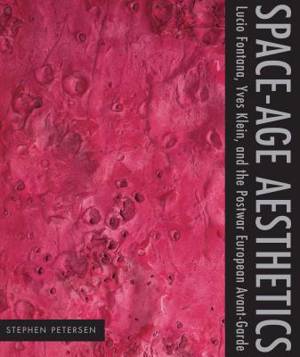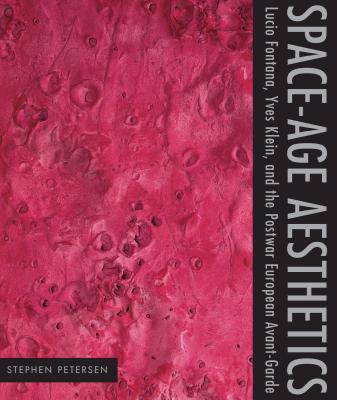
- Afhalen na 1 uur in een winkel met voorraad
- Gratis thuislevering in België vanaf € 30
- Ruim aanbod met 7 miljoen producten
- Afhalen na 1 uur in een winkel met voorraad
- Gratis thuislevering in België vanaf € 30
- Ruim aanbod met 7 miljoen producten
Space-Age Aesthetics
Lucio Fontana, Yves Klein, and the Postwar European Avant-Garde
Stephen PetersenOmschrijving
"In the Space Age," wrote Italian artist Lucio Fontana, "spatial art." Fontana's desire to create art in space came in response to unprecedented technological advances and contemporary fantasies of space travel. Fifteen years before Andy Warhol said he wanted to be as much a part of his times as rockets and television, Fontana's large-scale light-and-space installations became a short-lived but ultimately influential art-world phenomenon. The artists discussed in Space-Age Aesthetics looked beyond the limits of the picture, exploring space, mass media, pop culture, nuclear power, and science fiction to connect new art to the dramatic changes taking place through the encroaching Space Age.
Space-Age Aesthetics begins by addressing the imagery of space exploration as a field of mythical representation informed by Cold War politics and acted out in an expansive variety of media, from the picture press to comic books. Through persuasive arguments that reveal the many-layered interconnections between the artists' aesthetics and theoretical responses to the dawn of an age of revolutionary technologies, this book offers new ways to think about the historical emergence of pop, conceptual, postmodern, and installation art and serves to fill the long-neglected gap in material on the post-World War II European avant-garde.
Specificaties
Betrokkenen
- Auteur(s):
- Uitgeverij:
Inhoud
- Aantal bladzijden:
- 320
- Taal:
- Engels
- Reeks:
- Reeksnummer:
- nr. 11
Eigenschappen
- Productcode (EAN):
- 9780271033426
- Verschijningsdatum:
- 1/08/2009
- Uitvoering:
- Paperback
- Formaat:
- Trade paperback (VS)
- Afmetingen:
- 206 mm x 246 mm
- Gewicht:
- 1156 g

Alleen bij Standaard Boekhandel
Beoordelingen
We publiceren alleen reviews die voldoen aan de voorwaarden voor reviews. Bekijk onze voorwaarden voor reviews.












